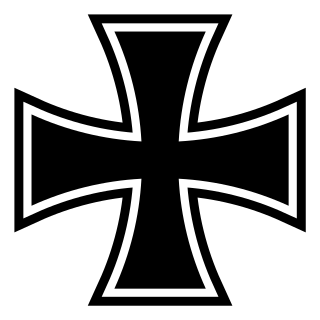Generalmajor Otto Fruhner MMC, IC, was a German World War I flying ace credited with 27 victories. He was one of the first aviators to parachute from a stricken aircraft.
Leutnant Kurt Hetze was a World War I flying ace credited with five aerial victories.
Vizefeldwebel Hermann Juhnke was a World War I flying ace credited with five aerial victories.
For the World War II general, see Hasso von Wedel (general)
VizefeldwebelAlfred Hübner was a World War I flying ace credited with six aerial victories.
LeutnantLudwig Luer was a German World War I flying ace credited with six aerial victories.
OffizierstellvertreterWilhelm Kühne was a World War I flying ace credited with seven confirmed aerial victories and five unconfirmed ones.
Oberleutnant Hans Kummetz was a World War I flying ace credited with seven aerial victories.
VizefeldwebelGustav Schneidewind was a World War I flying ace credited with seven aerial victories.
Vizefeldwebel Kurt Ungewitter was a German test pilot for Rumpler Flugzeugwerke and Albatros Flugzeugwerke, aircraft manufacturers in 1913. During World War I, he became a flying ace credited with seven aerial victories. He died in a postwar flying accident on 14 March 1927.
Vizeflugmeister Karl Scharon was a World War I flying ace credited with eight aerial victories.
Major Karl Waldemar Ritscherle was a World War I flying ace credited with eight aerial victories. He served again in the World War II Luftwaffe, and was killed in action when his Heinkel 111 was shot down and fell into Abberton Reservoir.
Leutnant Kurt Adolf Monnington (1891–1939) was a World War I flying ace credited with eight aerial victories.
Offizierstellvertreter Willi Kampe was a World War I flying ace credited with eight aerial victories.
Vizefeldwebel Fritz John Jacobsen was a World War I flying ace credited with eight confirmed and two unconfirmed aerial victories.
OffizierstellvertreterWilhelm Hippert IC was a World War I flying ace credited with eight confirmed aerial victories.
Leutnant Walter Böning was a World War I flying ace from the Grand Duchy of Oldenburg credited with 17 aerial victories. He began his World War I military service as an infantryman. He distinguished himself by winning both the Gold Medal for Bravery and the Second Class Iron Cross. He then transferred to aviation duty, training originally as a reconnaissance pilot before advancing to become a fighter pilot. Between 6 April 1917 and 30 May 1918, he was credited with 17 aerial victories. On 31 May 1918, he survived a midair collision while being attacked by British fighters. Although he coaxed his damaged machine home, the serious leg wound he had suffered sidelined him through war's end.
Leutnant Heinrich Georg Geigl HOH, IC was a World War I German flying ace credited with thirteen aerial victories. His midair collision with a Sopwith Camel killed him; however, the Camel was confirmed as Geigl's 13th victory.
Offizierstellvertreter Otto Esswein was a German World War I flying ace credited with twelve aerial victories.
OffizierstellvertreterFritz Gustav August Kosmahl HOH, IC was one of the first flying aces of Germany's Luftstreitkräfte during World War I. He was one of the few German two-seater aces of the war, being officially credited with nine aerial victories. He was also one of the first ten German aviators to earn the Royal House Order of Hohenzollern.




